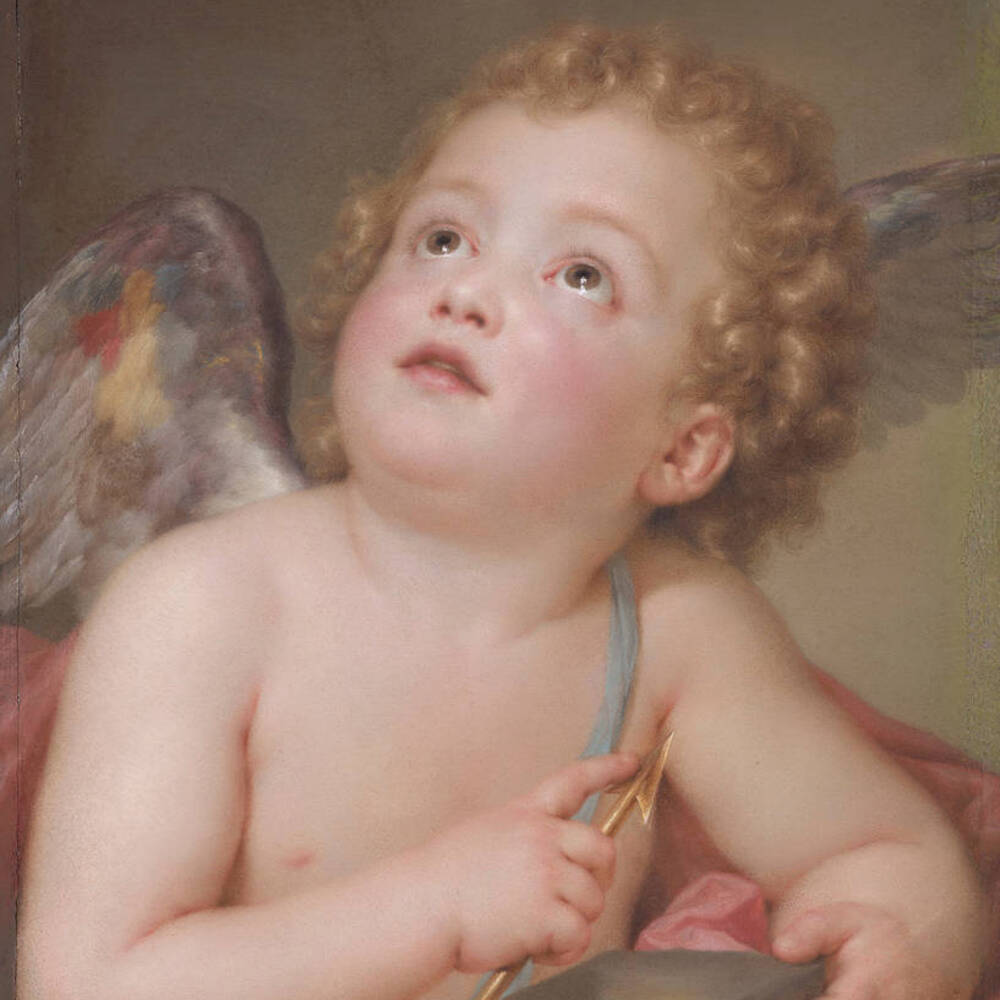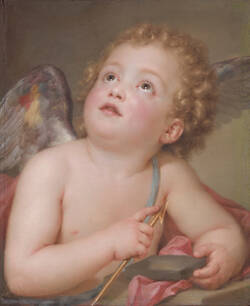Copied countless times, this Cupid with colourful wings is still one of the most popular pieces in the Pastel Cabinet and is regarded as a major work by the young Mengs. With his childlike face and blond curls, the son of the love goddess Venus is depicted as a symbol of innocent love. He seems to be pausing while sharpening his golden arrowhead, awaiting instructions from his divine mother as to whose heart he should kindle with love by means of his arrow.
Further Media
The earliest known pastel paintings were by sixteenth-century northern Italian artists. Initially, though, only three pigments were used for pastels – black, white and red. The Italian artists primarily worked with coloured powder pigments for preliminary sketches for their oil paintings.
Pastel painting enjoyed its Golden Age in the eighteenth century. Rosalba Carriera, who specialised in society portraits, pioneered the exclusive use of pastels. For portraits, the technique of pastel painting had some very definite advantages over working in oils. The pastel crayons were not just far lighter to transport, but also cheaper – and since pastels do not have to dry, artists needed fewer sessions with their subjects.
With her pastel portraits, Rosalba Carriera triggered a wave of enthusiasm for this art technique across Europe. Many artists also on show in the gallery, such as Anton Raphael Mengs and Jean-Etienne Liotard, were inspired by Rosalba’s pastels – and so helped to make pastel an independent medium in art.
After the French Revolution, pastel painting initially declined in popularity as it was associated with the aristocracy and nobles of the Ancien Régime. But pastels enjoyed a new lease of life towards the end of the nineteenth century – above all, in works by the French artist Edgar Dégas and the Impressionists.
- Location & Dating
- 1752/53
- Material & Technique
- Pastel on paper
- Dimenions
- 47,5 x 39 cm
- Museum
- Gemäldegalerie Alte Meister
- Inventory number
- Gal.-Nr. P 177

